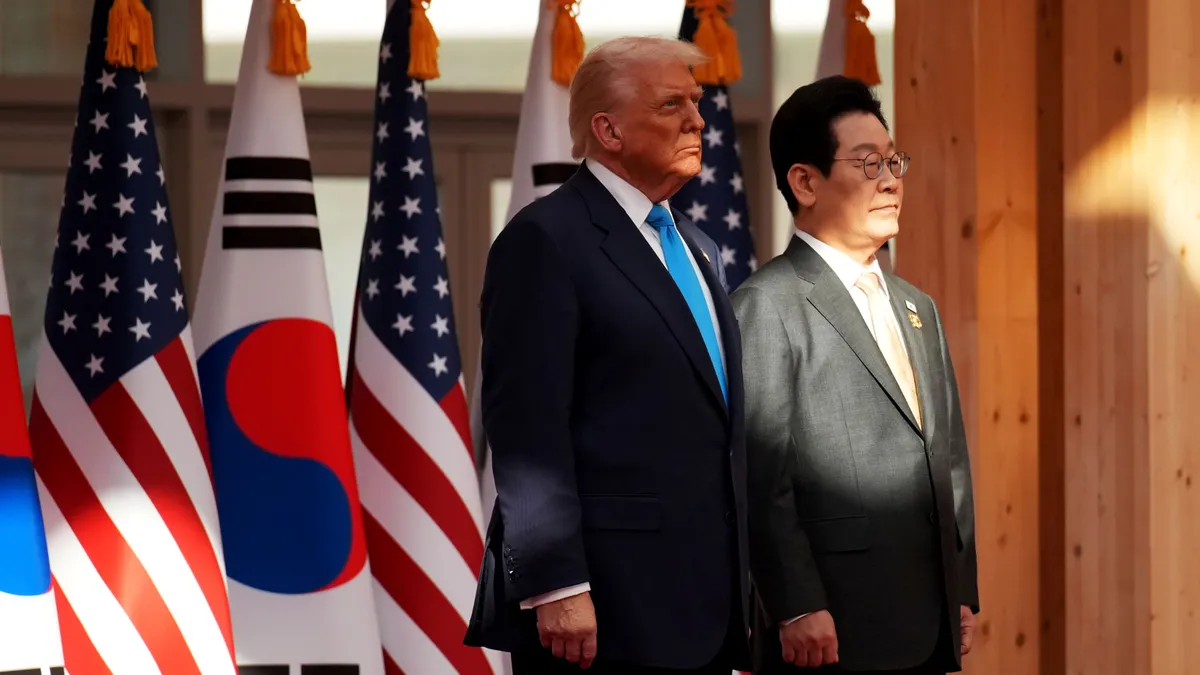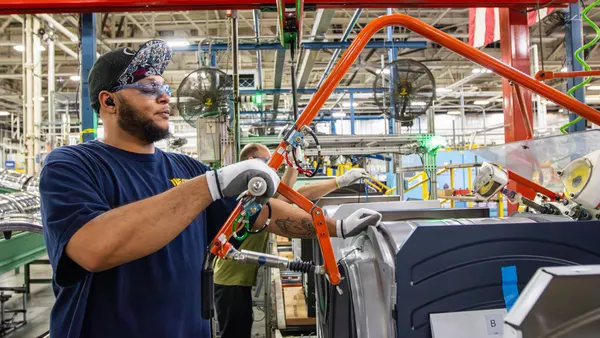The United States and South Korea formalized a trade-related agreement that cements a 15% tariff rate for imports from South Korea, per a joint fact sheet published by the White House Thursday.
The document reaffirms several provisions of a deal the countries first struck in July. U.S. President Donald Trump indicated last month that the pact was “pretty much finalized” at a dinner with South Korea President Lee Jae Myung and other officials during the Asia-Pacific Economic Cooperation summit in Seoul.
As part of the formalized agreement, the U.S. will charge a 15% tariff on most imports from South Korea. This will include Section 232 levies on cars, auto parts, timber, lumber and wood derivatives, per the fact sheet. For such sector-specific goods subject to additional tariffs, the U.S. will limit the total tariff burden to 15%.
In exchange, South Korea will ease restrictions on U.S. car imports, including eliminating a 50,000-unit limit on vehicles that meet U.S. safety standards but undergo no further inspection upon entry. According to the fact sheet, South Korea also agreed to address non-tariff trade barriers for food and agricultural products.
The fact sheet also includes plans for how the deal could be impacted by potential tariffs on pharmaceuticals and semiconductors. The U.S. is currently conducting Section 232 investigations into both sectors.
Per the fact sheet, the U.S. said it will cap any potential future levies on pharmaceuticals from South Korea at 15%. Meanwhile, regarding potential semiconductor tariffs, the U.S. will match the terms of any future agreements with countries with semiconductor trade volumes similar to South Korea's.
The U.S. also plans to remove tariffs on certain products, such as generic pharmaceuticals and ingredients as well as natural resources that are not available domestically in accordance with an executive order Trump signed in September.
Beyond tariff modifications, the fact sheet also details $350 billion in investments South Korea agreed to make in the U.S., including $150 billion in the U.S. shipbuilding industry. The remaining $200 billion will go toward strategic investments, though additional details were not provided.














